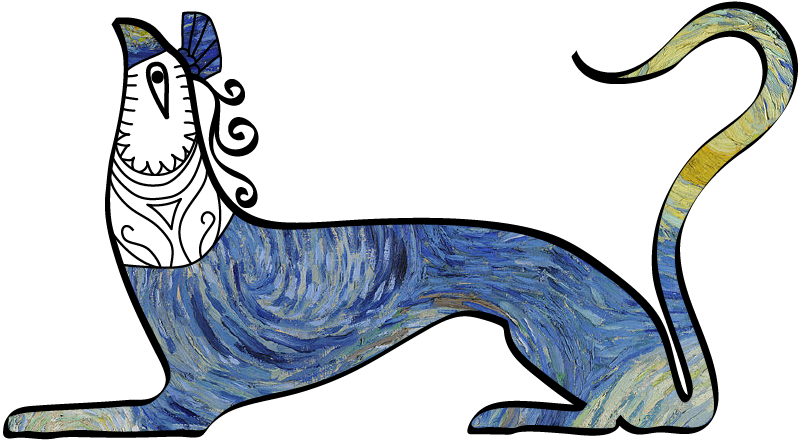The February 2024 issue of Nestor (51.2) is available as a free download.

Latest
INSTAP Academic Press
Susan C. Ferrence, Director of Publications of INSTAP Academic Press, sends the following announcement:
INSTAP Academic Press and ISD are pleased to announce that the latest editions of the Prehistory Monographs series have arrived.
These new volumes contain valuable insights from surveys and excavations conducted on the Minoan sites of Crete, exploring the intricate connection between society and its surroundings. They delve into the fascinating field of Minoan metallurgy, analyze intriguing burial customs, and offer detailed examinations of cremation practice and bone analysis.
Additionally, we'd like to draw your attention to a special offer valid for a limited time as part of the AIA book exhibit at the annual meeting of the Archaeological Institute of America that was held earlier in January in Chicago. For the next two months, the complete INSTAP backlist is available at significantly reduced prices with certain titles discounted by up to 50%--an excellent opportunity for you to expand your collection!
Latest volumes: tinyurl.com/INSTAPNew2023
Backlist Flyer: tinyurl.com/INSTAPbacklist
For orders in Europe, please email directly Simon Baker at ISD International:
AEA 2024
On 15 March 2024 abstracts (300 words) are due for the 2024 Spring Conference of the Association for Environmental Archaeology (AEA 2024), to be held in Faro, Portugal on 3-5 May 2024. Further information and the form for submission are available at https://aea24faro.icarehb.com/abstract-submission/. The themes of the conference will be:
• Palaeolithic environments, subsistence, and diet
• Agricultural origins and the earliest villages
• Adaptations to coastal and wetland environments
• Environmental impact of sustained human settlements
• Human adaptations to extreme or arid environments
• Cross-disciplinary research in environmental archaeology
TAG-US 2024
On 22 March 2024 session and workshop proposals (200 words) are due for the 2024 meeting of the Theoretical Archaeology Group (TAG-US 2024), to be held in Santa Fe on 21-23 May 2024. On 22 April 2024 abstracts for papers (150 words) are due. Further information and the form for submission are available at https://tagsantafe.com/.
AIA 2025
On 25 March 2024 (8 April with a late fee) submissions for colloquia, joint AIA/SCS sessions, and open-session papers and posters needing an early decision to acquire a visa or obtain funding are due for the Annual Meeting of the Archaeological Institute of America (AIA 2025), to be held in Philadelphia, PA from 2-5 January 2025. On 5 August 2024 (19 August with a late fee) submissions are due for workshops, open session papers and posters, and any provisionally accepted colloquia that are resubmitting. On 1 November 2024 applications are due for Lightning Round and Roundtable submissions. Submission forms and further information are available at https://www.archaeological.org/programs/professionals/annual-meeting/call-for-papers/.
Archaeological Research Unit Public Lectures, Spring 2024
The schedule of lectures at the Archaeological Research Unit at the University of Cyprus has been announced for spring 2024. All lectures will be held at 7:30 PM (EET) virtually via ZOOM, with some in hybrid form (via ZOOM and at the ARU Lecture Room). Prior registration is required Further information and links to register are available at https://www.ucy.ac.cy/aru/wp-content/uploads/sites/251/2024/01/ARU_Lectures_S.S._2024.pdf.
5 February 2024: Σ. Χρυσουλάκη, “Ο χαρακτήρας και η δομή μιας ουτοπικής πολιτείας”
12 February 2024: Ε. Σιουμπάρα, “Κλασικά αναθηματικά μνημεία προς επανάχρηση στην Ακρόπολη: Νέες έρευνες”
19 February 2024 (hybrid): Y. Papadatos and T. Kalantzopoulou, “The mountains of Crete in the Bronze Age: Current archaeological approaches”
24 February 2024 (hybrid): Workshop by the EMA academic staff and researchers: “‘Το Έργον '23’ Ετήσια Ημερίδα για το Αρχαιολογικό Έργο του Πανεπιστημίου Κύπρου το 2023”
26 February 2024 (hybrid): E. Walter-Karydi, “Lapide pingere: On the materiality of late Classical and Hellenistic mosaics”
4 March 2024 (hybrid): H. Shochat, “A new look on Late Bronze and Iron Ages ivory exchange: The case of the southern Levant”
11 March 2024 (hybrid): Σ. Χρυσουλάκη, “Ο χαρακτήρας και η δομή μιας ουτοπικής πολιτείας”
14-15 March 2024 (hybrid): Workshop organized by C. M. Donnelly and A. Georgiou, “Marks, Marketing and Markets: Investigating the intersection of marking practices and commercial strategies in the Bronze Age and Early Iron Age eastern Mediterranean”
8 April 2024: A. U. Kordas, M. Rekowska, S. Popławski, and A. Brzozowska-Jawornicka, “A new Greco-Roman temple in Cyprus? A set of decorated stone details from the Latsithkia site: Reconstruction potential and research prospects”
15 April 2024 (hybrid): T. Hodos, “Eggstraordinary objects: Ostrich eggs as luxury items in the ancient Mediterranean”
20 April 2024 (hybrid): Workshop, “A unique monument at the crossroads of political transformation: Investigation and documentation of the Palaepaphos-Laona tumulus”
22 April 2024 (hybrid): Γ. Στρατούλη, “Ευρωπαίων η πόλις: Μια αναδυόμενη πόλη της Βοττιαίας”
INSTAP SCEC Lectures, Spring 2024
The schedule of online lectures at the Institute for Aegean Prehistory Study Center for East Crete (INSTAP SCEC) has been announced for spring 2024. Lectures are held at 12:00 pm Eastern Time/7 pm in Greece. Registration for the lectures is necessary beforehand.
28 February 2024: S. Vitale, “Ahhiyawa and Mycenaean Greece. A View from the Southeast Aegean-Southwest Coastal Anatolian Region”
https://us02web.zoom.us/meeting/register/tZMkdOGhqDkiGdakw2pQzx5LNMp9ANBI_ZQH#/registration
6 March 2024: D. Nakassis, "Towards a post-cultural archaeology of Late Bronze Age Greece"
https://us02web.zoom.us/meeting/register/tZ0rfuCtqz8vHtxDNvJRpehFqcNTc2AE5tFz#/registration
24 April 2024: C. Henkel, "Beyond Food: An Archaeobotanical Investigation into the Role of Plants within the Ritual Landscape of Bronze Age Crete"
https://us02web.zoom.us/meeting/register/tZIqduqqpzkjG9We_0u-fq2cfGuwDeqA3KDe#/registration
Sphakia Survey Website
The new Sphakia Survey website is now available at https://portal.sds.ox.ac.uk/collections/The_Sphakia_Survey_Internet_Edition/6816405. It includes all the images that were on the old site, now at high resolution; the Sphakia Survey video in digital form; some explanatory text; and pdfs of most if not all of the articles that have been published to date.
